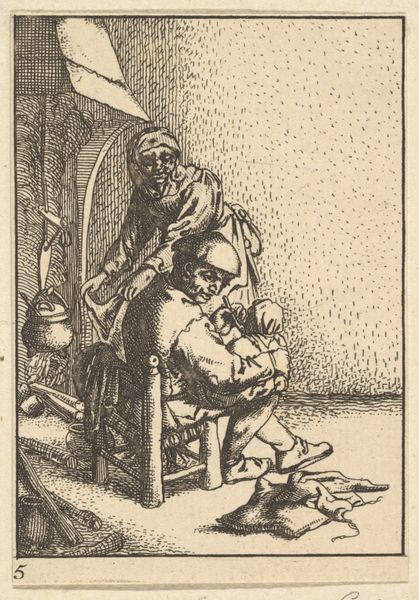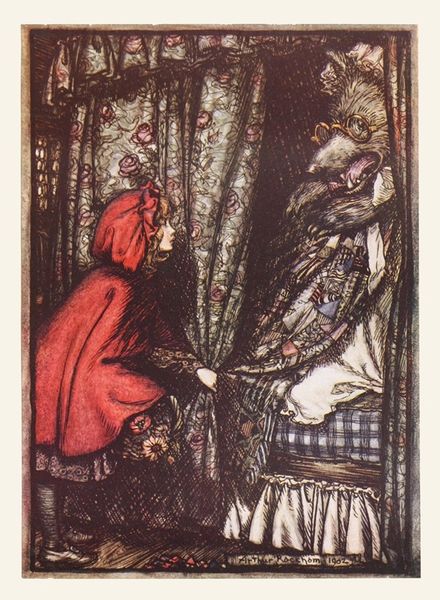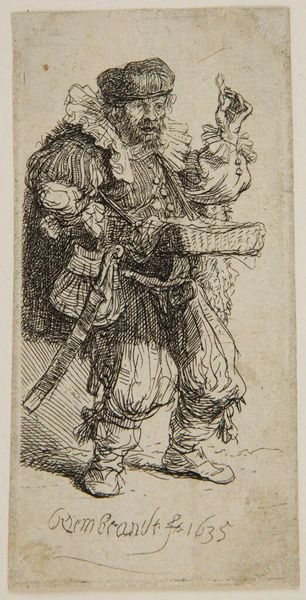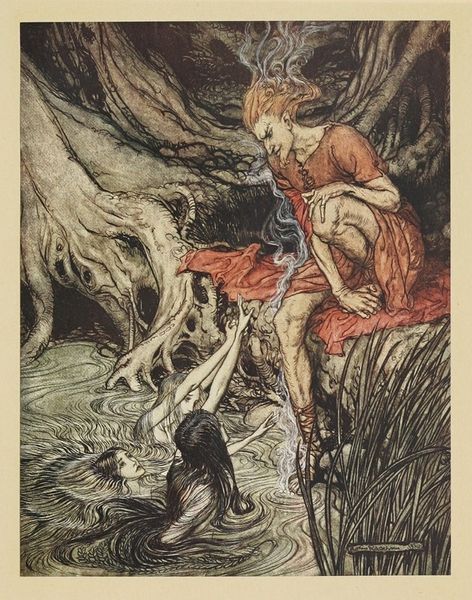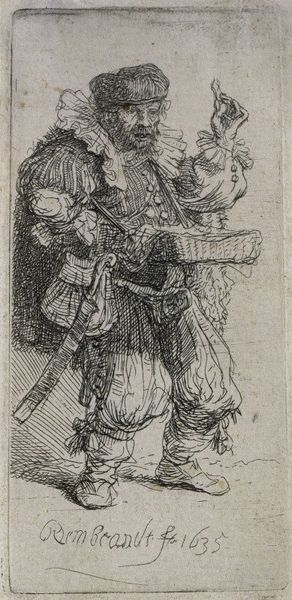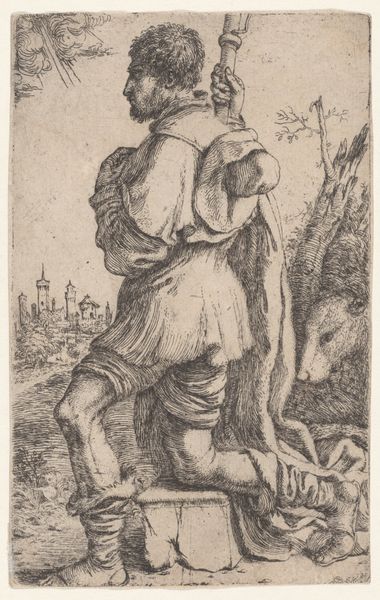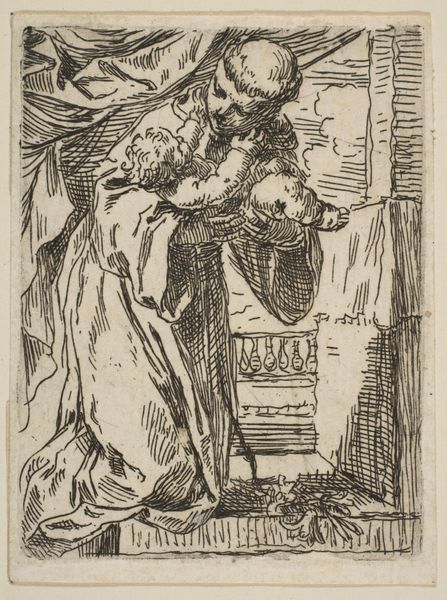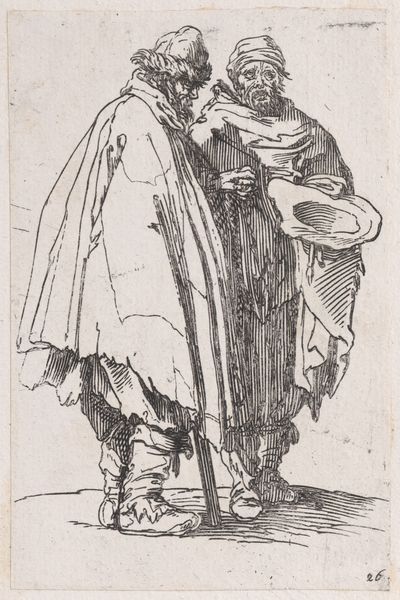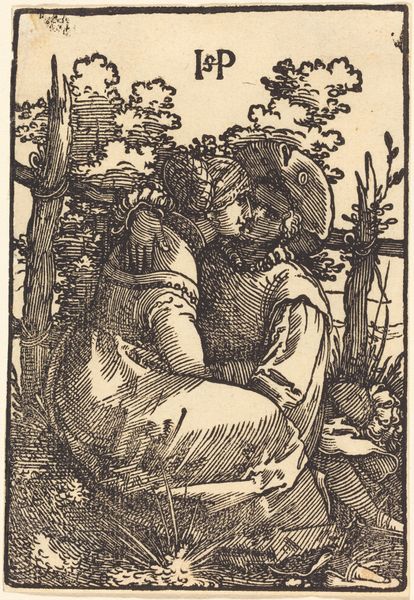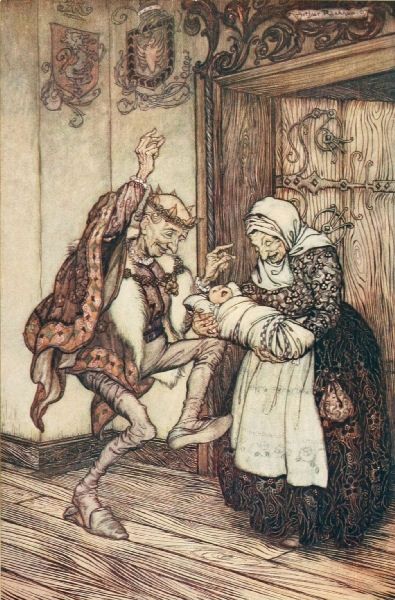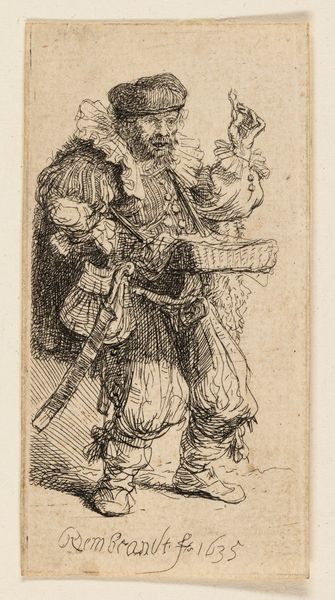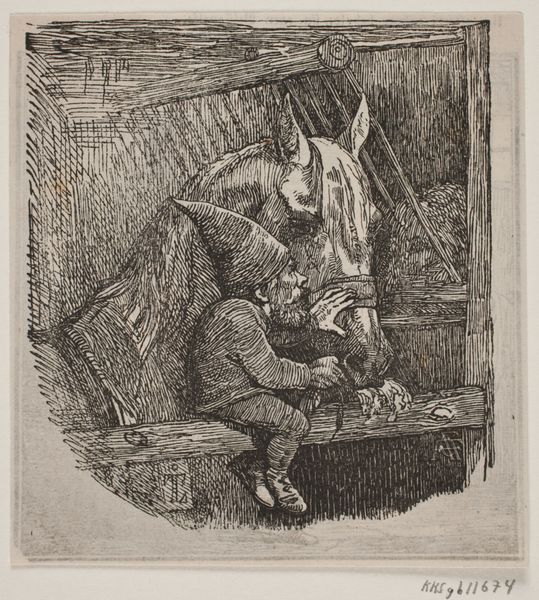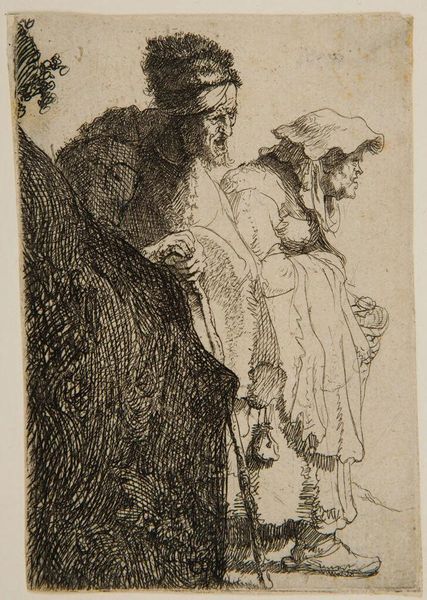
Copyright: Public Domain: Artvee
Curator: Arthur Rackham's 1920 ink and pencil drawing, titled "The Old Man had to sit by himself, and ate his food from a wooden bowl," offers a somber tableau. It is quite evocative! Editor: It is indeed— immediately, I’m struck by the stark simplicity of the composition and the sheer vulnerability of the figure. The textures look coarse. What was the artistic labor that shaped it? Curator: Rackham, as an illustrator, often employed ink and pencil, creating that characteristic delicate line work that borders on the fantastical while grounding his illustrations in an apparent reality. This illustration perhaps speaks to themes of isolation. How can we interpret this image through lenses of social marginalization and ageing? Editor: Well, focusing on materials and method, the wooden bowl from which he eats, rendered in humble strokes, signifies a basic form of subsistence. Considering the date, I wonder what access he had to even simple comfort. Is he a cast-off of a changing society during that era? Is there an implication of worker exploitation, particularly concerning the production of woodenware? Curator: It is plausible. The narrative-art here might offer a quiet protest about poverty and loneliness, and against an industrialized society where tradition has disappeared. Rackham creates space for considering intersectional identities: age, class, perhaps even ability all meet. Editor: I’d be curious to learn about the specific grades of pencil and the source of the ink. Perhaps it tells a bigger story about what was valued and consumed. Was this wood sourced locally, or brought in from colonies? It may have a lot to reveal. Curator: The artist has succeeded in conveying such vulnerability, such dignity even in abjection, in just a few lines. It speaks, perhaps, of the quiet heroism of existing. Editor: It certainly offers an example of an aesthetic born of labor that we, looking at the art, need to acknowledge. This opens dialogue around poverty and consumption in the production of art. Curator: Absolutely. It's a potent commentary and intersection of social issues with a specific life that extends beyond the literal depiction and historical timeframe. Editor: Indeed. A closer look shows both the physical reality and also social structures— material culture shapes life, and this piece reminds us of it.
Comments
No comments
Be the first to comment and join the conversation on the ultimate creative platform.
